Huy-Hieu Pham
CLEAR: Causal Learning Framework For Robust Histopathology Tumor Detection Under Out-Of-Distribution Shifts
Oct 16, 2025Abstract:Domain shift in histopathology, often caused by differences in acquisition processes or data sources, poses a major challenge to the generalization ability of deep learning models. Existing methods primarily rely on modeling statistical correlations by aligning feature distributions or introducing statistical variation, yet they often overlook causal relationships. In this work, we propose a novel causal-inference-based framework that leverages semantic features while mitigating the impact of confounders. Our method implements the front-door principle by designing transformation strategies that explicitly incorporate mediators and observed tissue slides. We validate our method on the CAMELYON17 dataset and a private histopathology dataset, demonstrating consistent performance gains across unseen domains. As a result, our approach achieved up to a 7% improvement in both the CAMELYON17 dataset and the private histopathology dataset, outperforming existing baselines. These results highlight the potential of causal inference as a powerful tool for addressing domain shift in histopathology image analysis.
Personalized Privacy-Preserving Framework for Cross-Silo Federated Learning
Feb 22, 2023
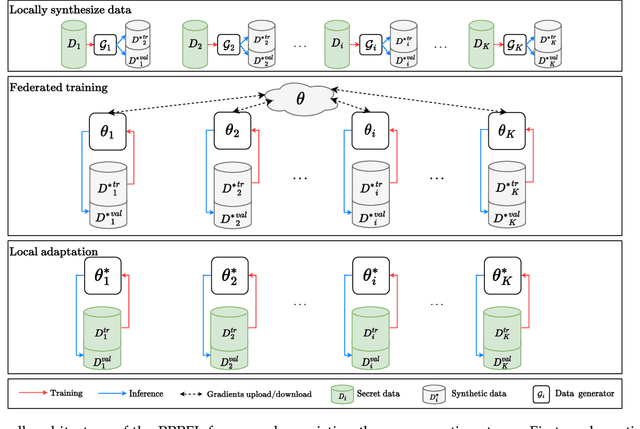
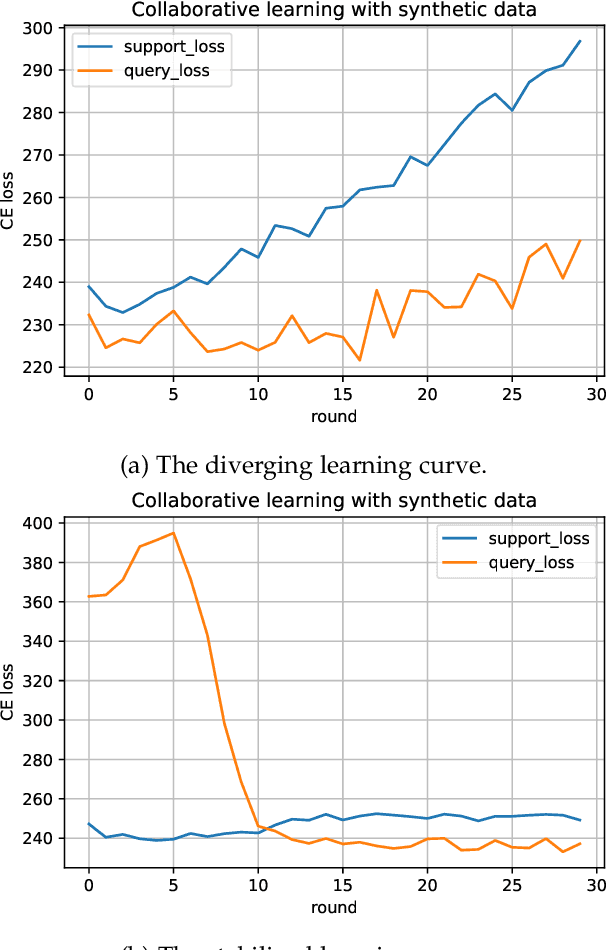

Abstract:Federated learning (FL) is recently surging as a promising decentralized deep learning (DL) framework that enables DL-based approaches trained collaboratively across clients without sharing private data. However, in the context of the central party being active and dishonest, the data of individual clients might be perfectly reconstructed, leading to the high possibility of sensitive information being leaked. Moreover, FL also suffers from the nonindependent and identically distributed (non-IID) data among clients, resulting in the degradation in the inference performance on local clients' data. In this paper, we propose a novel framework, namely Personalized Privacy-Preserving Federated Learning (PPPFL), with a concentration on cross-silo FL to overcome these challenges. Specifically, we introduce a stabilized variant of the Model-Agnostic Meta-Learning (MAML) algorithm to collaboratively train a global initialization from clients' synthetic data generated by Differential Private Generative Adversarial Networks (DP-GANs). After reaching convergence, the global initialization will be locally adapted by the clients to their private data. Through extensive experiments, we empirically show that our proposed framework outperforms multiple FL baselines on different datasets, including MNIST, Fashion-MNIST, CIFAR-10, and CIFAR-100.
A novel deep learning-based approach for sleep apnea detection using single-lead ECG signals
Aug 05, 2022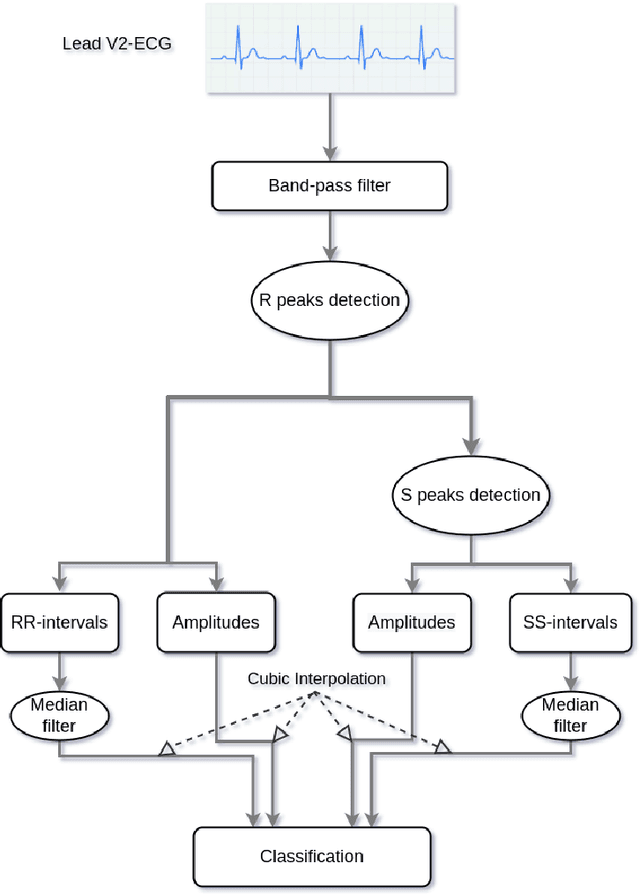
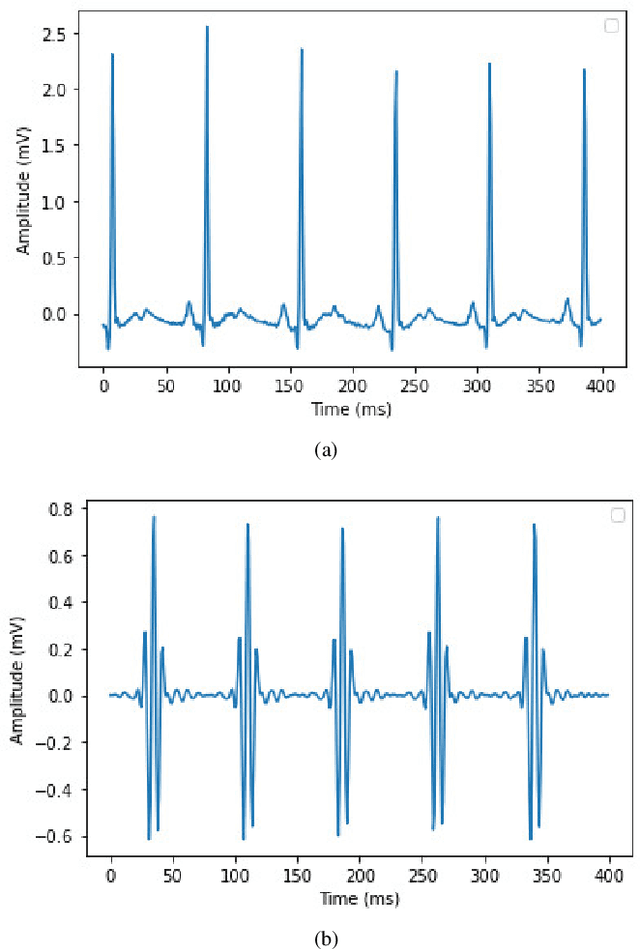
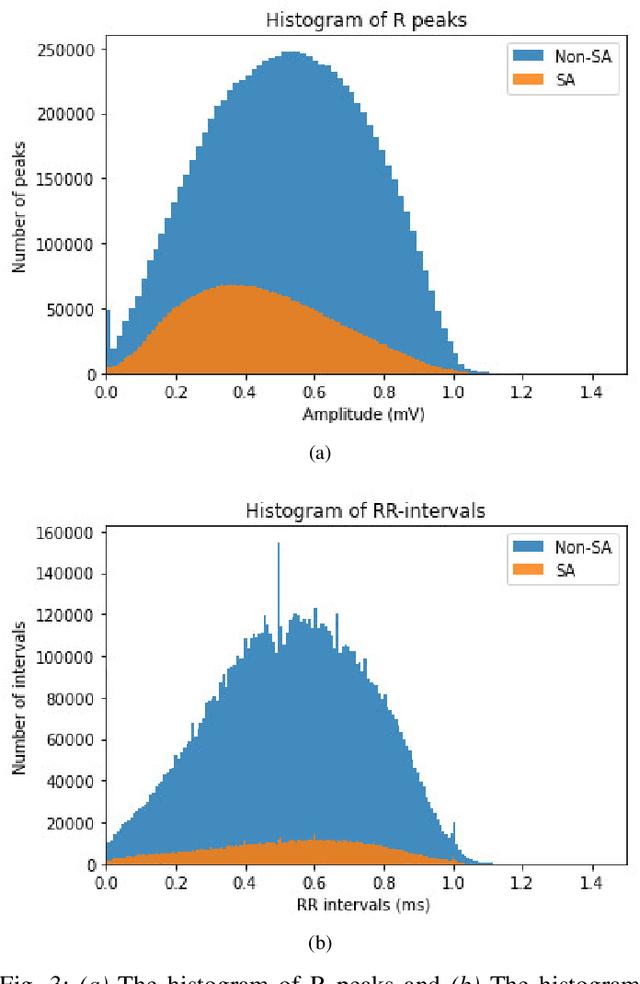
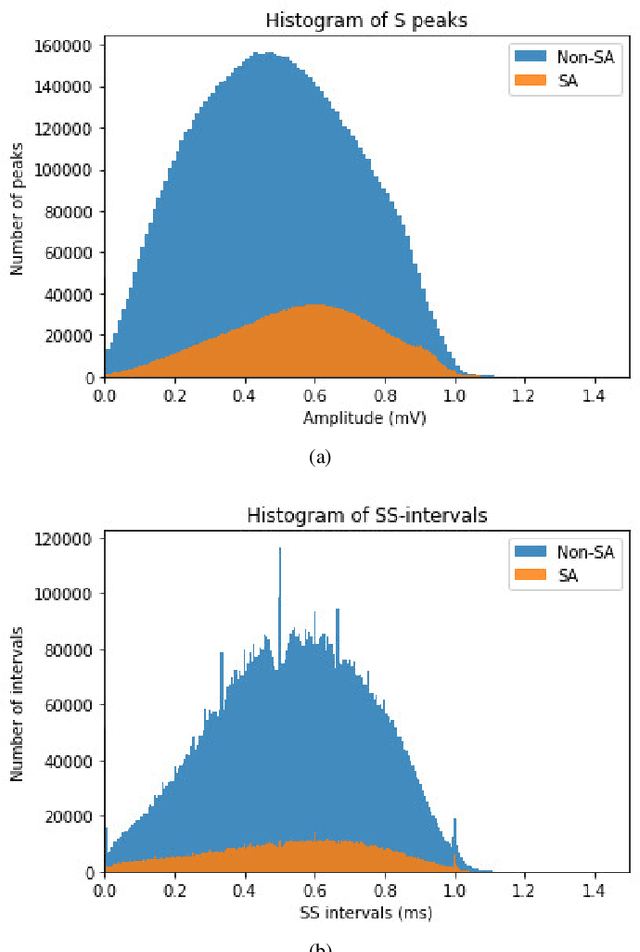
Abstract:Sleep apnea (SA) is a type of sleep disorder characterized by snoring and chronic sleeplessness, which can lead to serious conditions such as high blood pressure, heart failure, and cardiomyopathy (enlargement of the muscle tissue of the heart). The electrocardiogram (ECG) plays a critical role in identifying SA since it might reveal abnormal cardiac activity. Recent research on ECG-based SA detection has focused on feature engineering techniques that extract specific characteristics from multiple-lead ECG signals and use them as classification model inputs. In this study, a novel method of feature extraction based on the detection of S peaks is proposed to enhance the detection of adjacent SA segments using a single-lead ECG. In particular, ECG features collected from a single lead (V2) are used to identify SA episodes. On the extracted features, a CNN model is trained to detect SA. Experimental results demonstrate that the proposed method detects SA from single-lead ECG data is more accurate than existing state-of-the-art methods, with 91.13% classification accuracy, 92.58% sensitivity, and 88.75% specificity. Moreover, the further usage of features associated with the S peaks enhances the classification accuracy by 0.85%. Our findings indicate that the proposed machine learning system has the potential to be an effective method for detecting SA episodes.
Learning to Recognize 3D Human Action from A New Skeleton-based Representation Using Deep Convolutional Neural Networks
Dec 26, 2018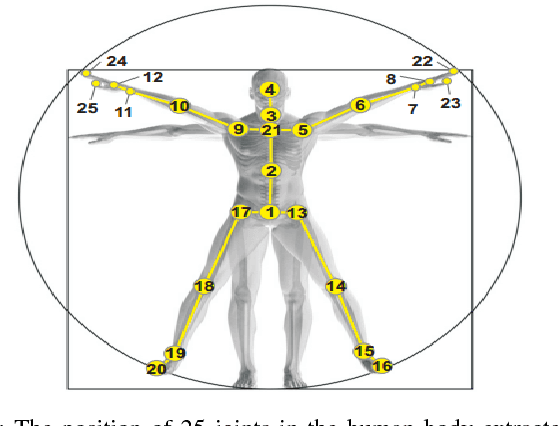
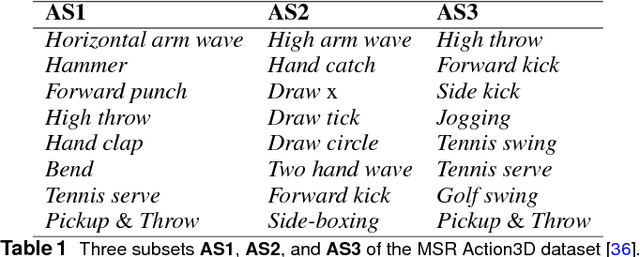

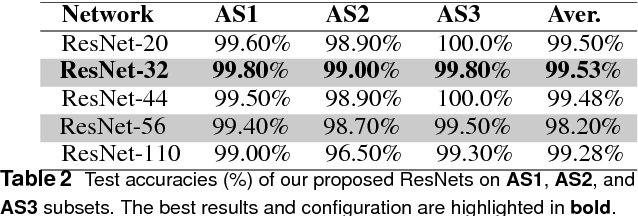
Abstract:Recognizing human actions in untrimmed videos is an important challenging task. An effective 3D motion representation and a powerful learning model are two key factors influencing recognition performance. In this paper we introduce a new skeleton-based representation for 3D action recognition in videos. The key idea of the proposed representation is to transform 3D joint coordinates of the human body carried in skeleton sequences into RGB images via a color encoding process. By normalizing the 3D joint coordinates and dividing each skeleton frame into five parts, where the joints are concatenated according to the order of their physical connections, the color-coded representation is able to represent spatio-temporal evolutions of complex 3D motions, independently of the length of each sequence. We then design and train different Deep Convolutional Neural Networks (D-CNNs) based on the Residual Network architecture (ResNet) on the obtained image-based representations to learn 3D motion features and classify them into classes. Our method is evaluated on two widely used action recognition benchmarks: MSR Action3D and NTU-RGB+D, a very large-scale dataset for 3D human action recognition. The experimental results demonstrate that the proposed method outperforms previous state-of-the-art approaches whilst requiring less computation for training and prediction.
Exploiting deep residual networks for human action recognition from skeletal data
Mar 21, 2018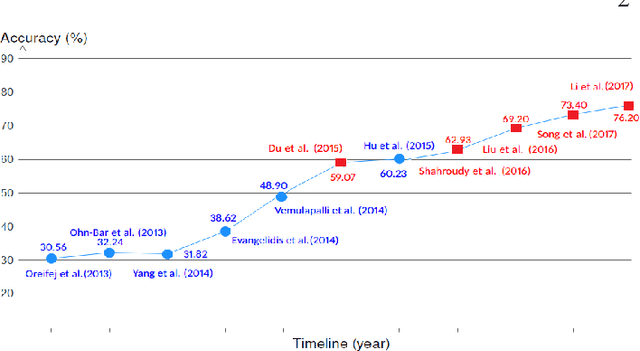
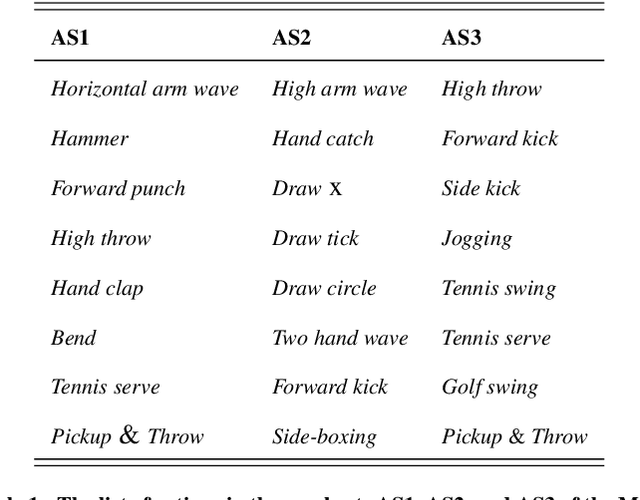
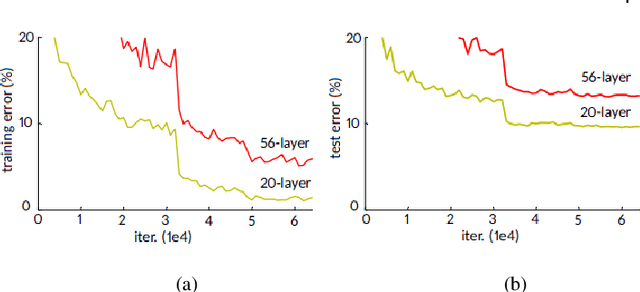
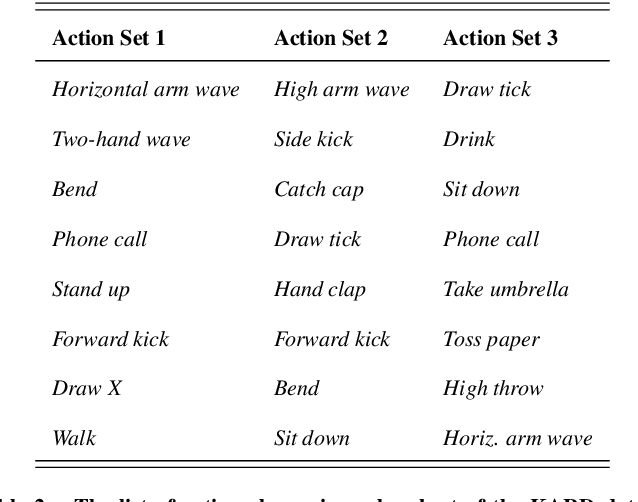
Abstract:The computer vision community is currently focusing on solving action recognition problems in real videos, which contain thousands of samples with many challenges. In this process, Deep Convolutional Neural Networks (D-CNNs) have played a significant role in advancing the state-of-the-art in various vision-based action recognition systems. Recently, the introduction of residual connections in conjunction with a more traditional CNN model in a single architecture called Residual Network (ResNet) has shown impressive performance and great potential for image recognition tasks. In this paper, we investigate and apply deep ResNets for human action recognition using skeletal data provided by depth sensors. Firstly, the 3D coordinates of the human body joints carried in skeleton sequences are transformed into image-based representations and stored as RGB images. These color images are able to capture the spatial-temporal evolutions of 3D motions from skeleton sequences and can be efficiently learned by D-CNNs. We then propose a novel deep learning architecture based on ResNets to learn features from obtained color-based representations and classify them into action classes. The proposed method is evaluated on three challenging benchmark datasets including MSR Action 3D, KARD, and NTU-RGB+D datasets. Experimental results demonstrate that our method achieves state-of-the-art performance for all these benchmarks whilst requiring less computation resource. In particular, the proposed method surpasses previous approaches by a significant margin of 3.4% on MSR Action 3D dataset, 0.67% on KARD dataset, and 2.5% on NTU-RGB+D dataset.
Learning and Recognizing Human Action from Skeleton Movement with Deep Residual Neural Networks
Mar 21, 2018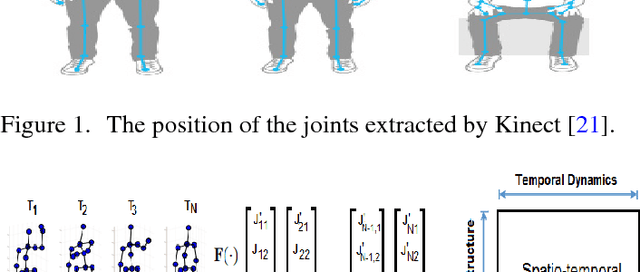
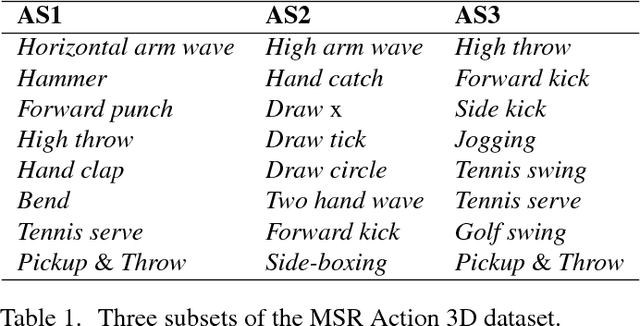

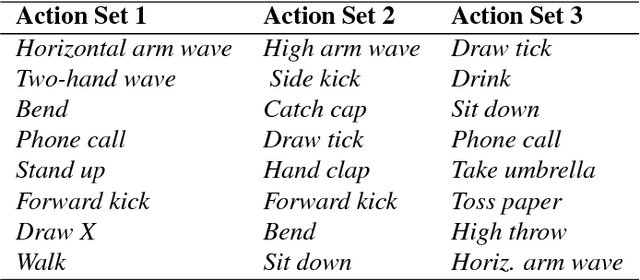
Abstract:Automatic human action recognition is indispensable for almost artificial intelligent systems such as video surveillance, human-computer interfaces, video retrieval, etc. Despite a lot of progress, recognizing actions in an unknown video is still a challenging task in computer vision. Recently, deep learning algorithms have proved its great potential in many vision-related recognition tasks. In this paper, we propose the use of Deep Residual Neural Networks (ResNets) to learn and recognize human action from skeleton data provided by Kinect sensor. Firstly, the body joint coordinates are transformed into 3D-arrays and saved in RGB images space. Five different deep learning models based on ResNet have been designed to extract image features and classify them into classes. Experiments are conducted on two public video datasets for human action recognition containing various challenges. The results show that our method achieves the state-of-the-art performance comparing with existing approaches.
 Add to Chrome
Add to Chrome Add to Firefox
Add to Firefox Add to Edge
Add to Edge